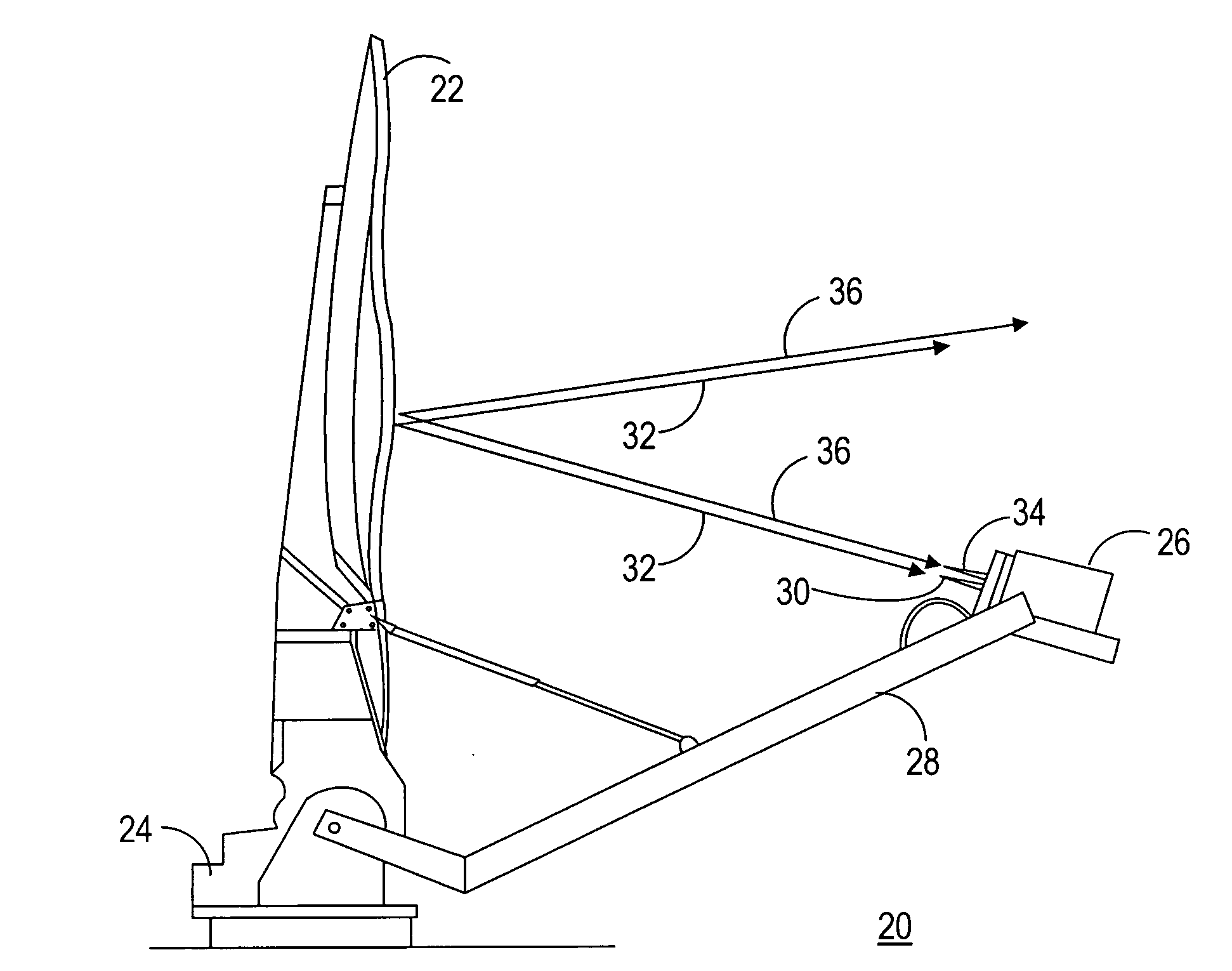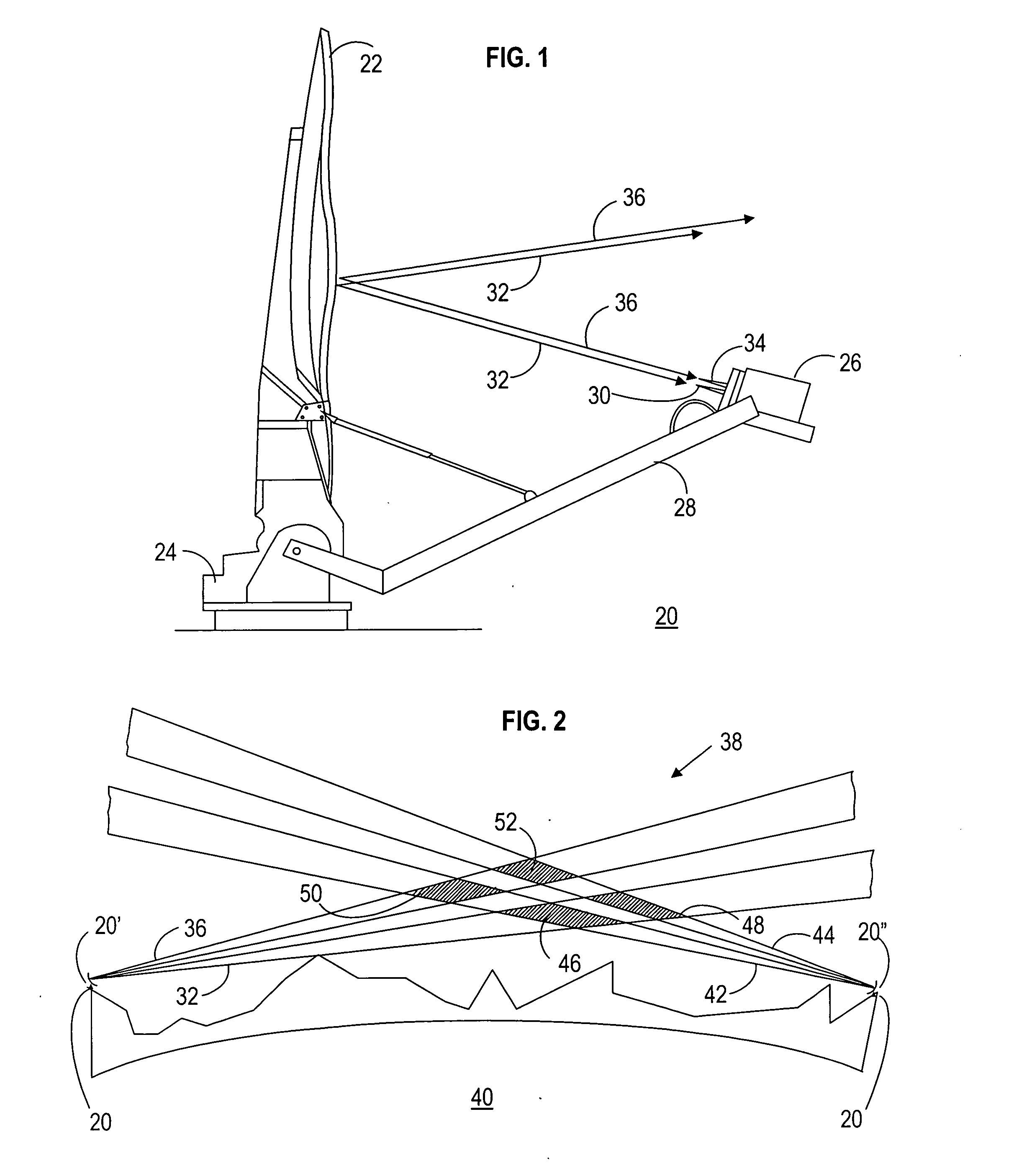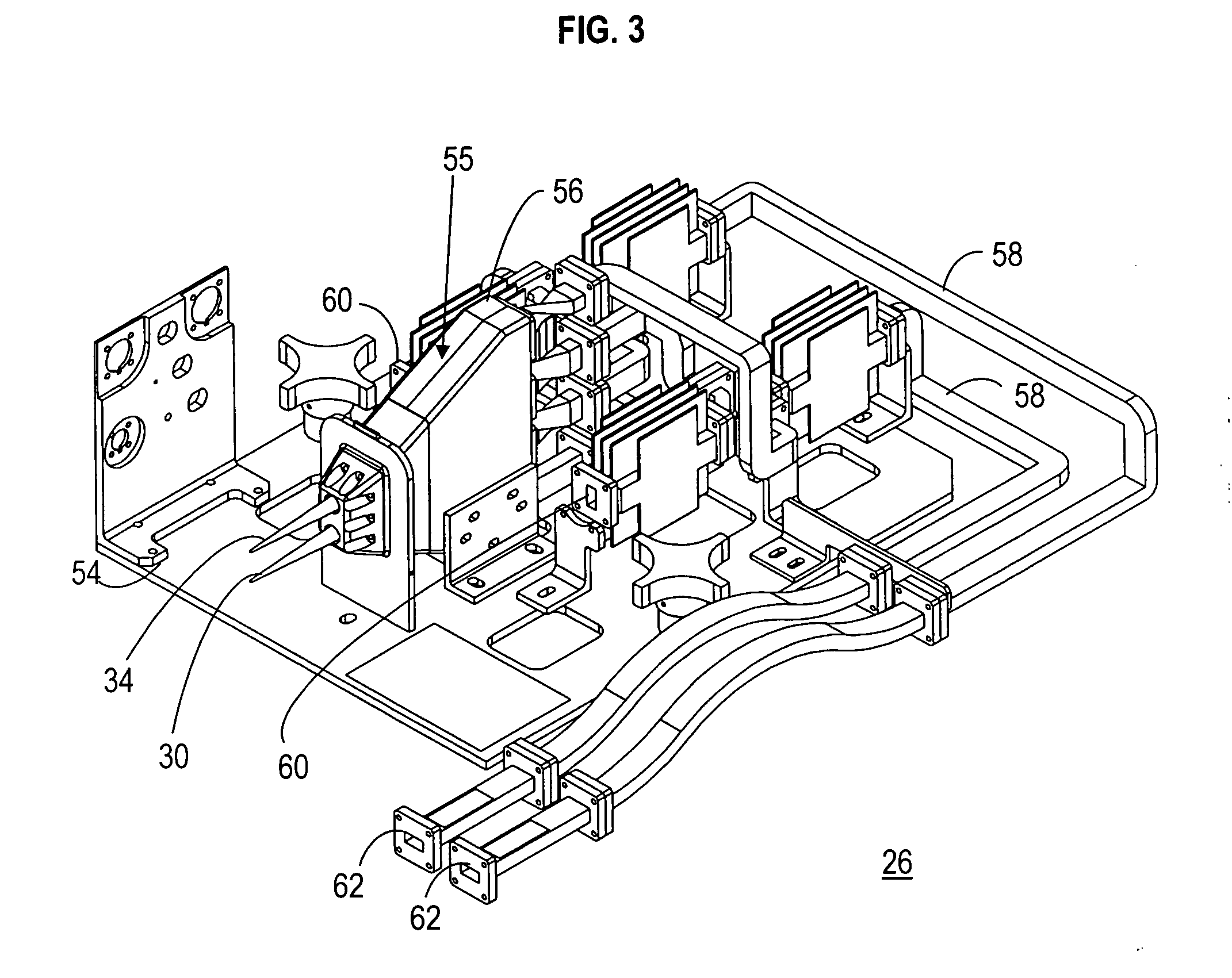Angular diversity antenna system and feed assembly for same
a technology of antenna system and feed assembly, applied in the field of communication system, can solve the problems of unreliable use of troposcatter communication link, loss of signal, and fading of signals by as much as twenty or more decibels, and achieve the effect of angular diversity in the antenna system, cost-effectiveness, and convenient deploymen
- Summary
- Abstract
- Description
- Claims
- Application Information
AI Technical Summary
Benefits of technology
Problems solved by technology
Method used
Image
Examples
Embodiment Construction
[0028]The present invention entails a dual-beam feed assembly for an antenna system. In a preferred embodiment, the dual-beam feed assembly is utilized in a tropospheric scatter communication system to provide angular diversity. However, the dual-beam feed assembly described herein may alternatively be used for line of sight (LOS) applications and / or satellite communication (satcom) links. Furthermore, the dual-beam feed assembly is described in connection with a parabolic reflector antenna system. However, the dual-beam feed assembly may alternatively be utilized in connection with other antenna systems, such as a parabolic torus antenna system, a spherical antenna system, a ring focus antenna system, and the like.
[0029]FIG. 1 shows a side view of a troposcatter station 20 in accordance with a preferred embodiment of the present invention. Troposcatter station 20 includes an antenna reflector 22 mounted on a positioning system 24. A feed assembly 26 is in communication with reflect...
PUM
 Login to View More
Login to View More Abstract
Description
Claims
Application Information
 Login to View More
Login to View More - R&D
- Intellectual Property
- Life Sciences
- Materials
- Tech Scout
- Unparalleled Data Quality
- Higher Quality Content
- 60% Fewer Hallucinations
Browse by: Latest US Patents, China's latest patents, Technical Efficacy Thesaurus, Application Domain, Technology Topic, Popular Technical Reports.
© 2025 PatSnap. All rights reserved.Legal|Privacy policy|Modern Slavery Act Transparency Statement|Sitemap|About US| Contact US: help@patsnap.com



